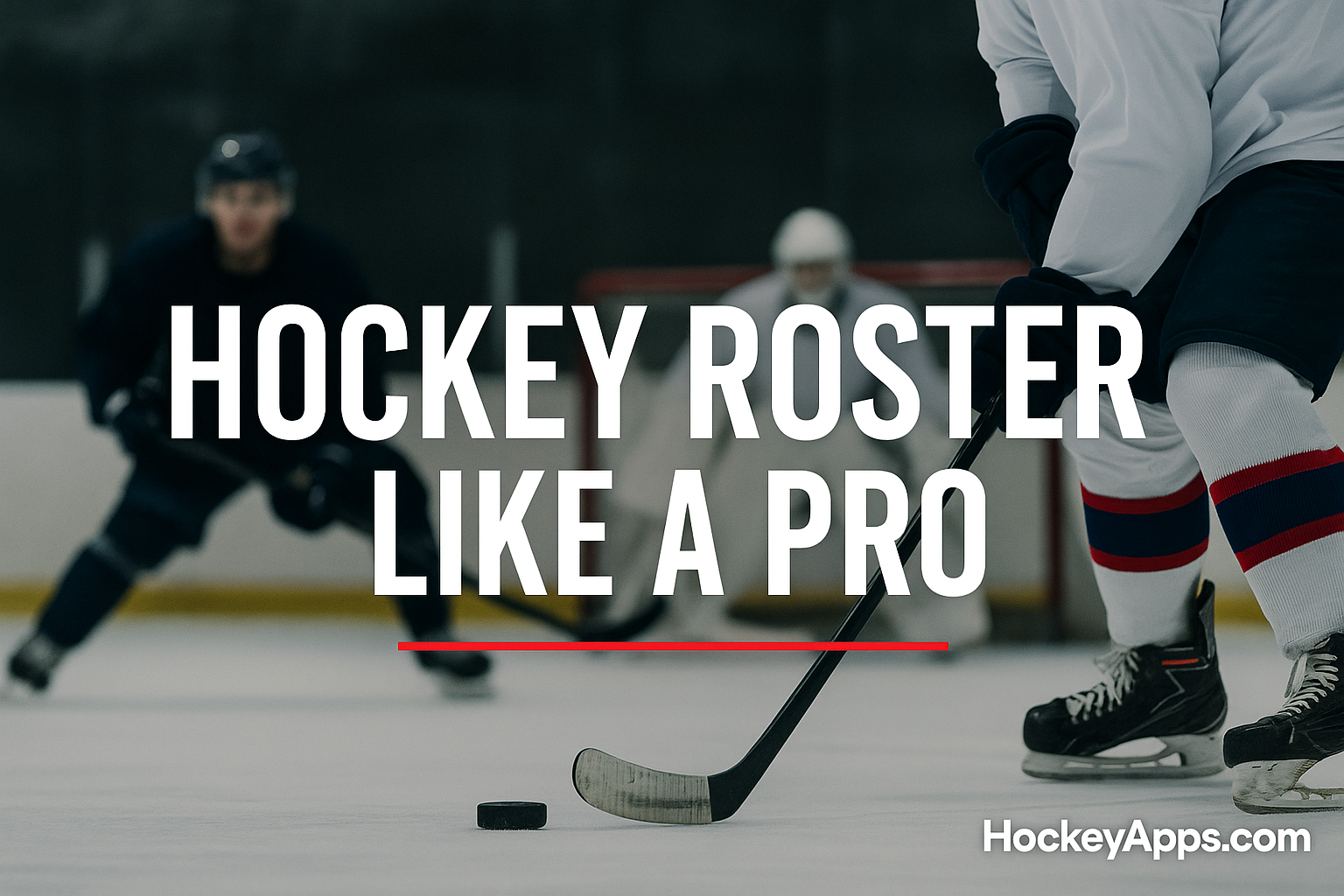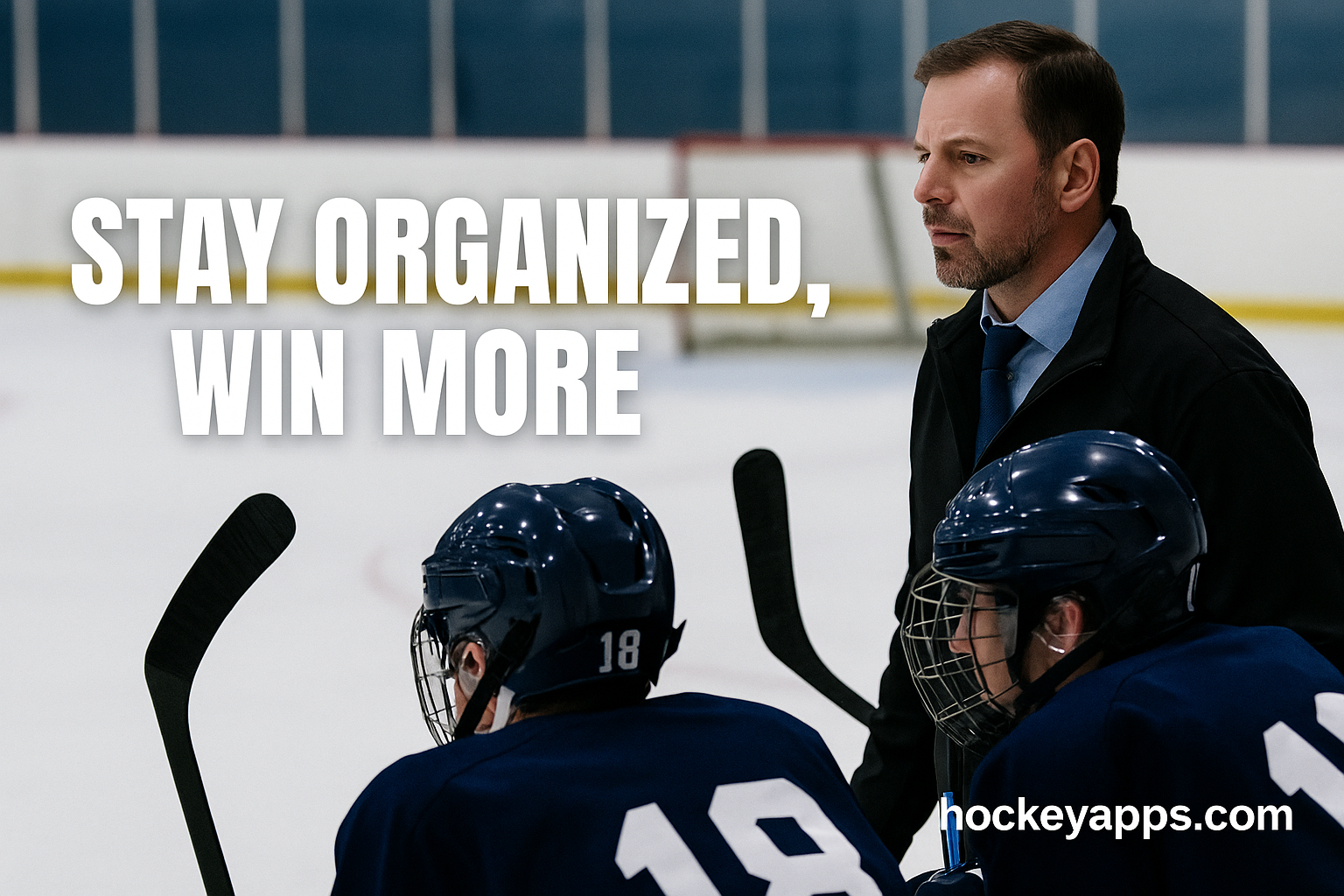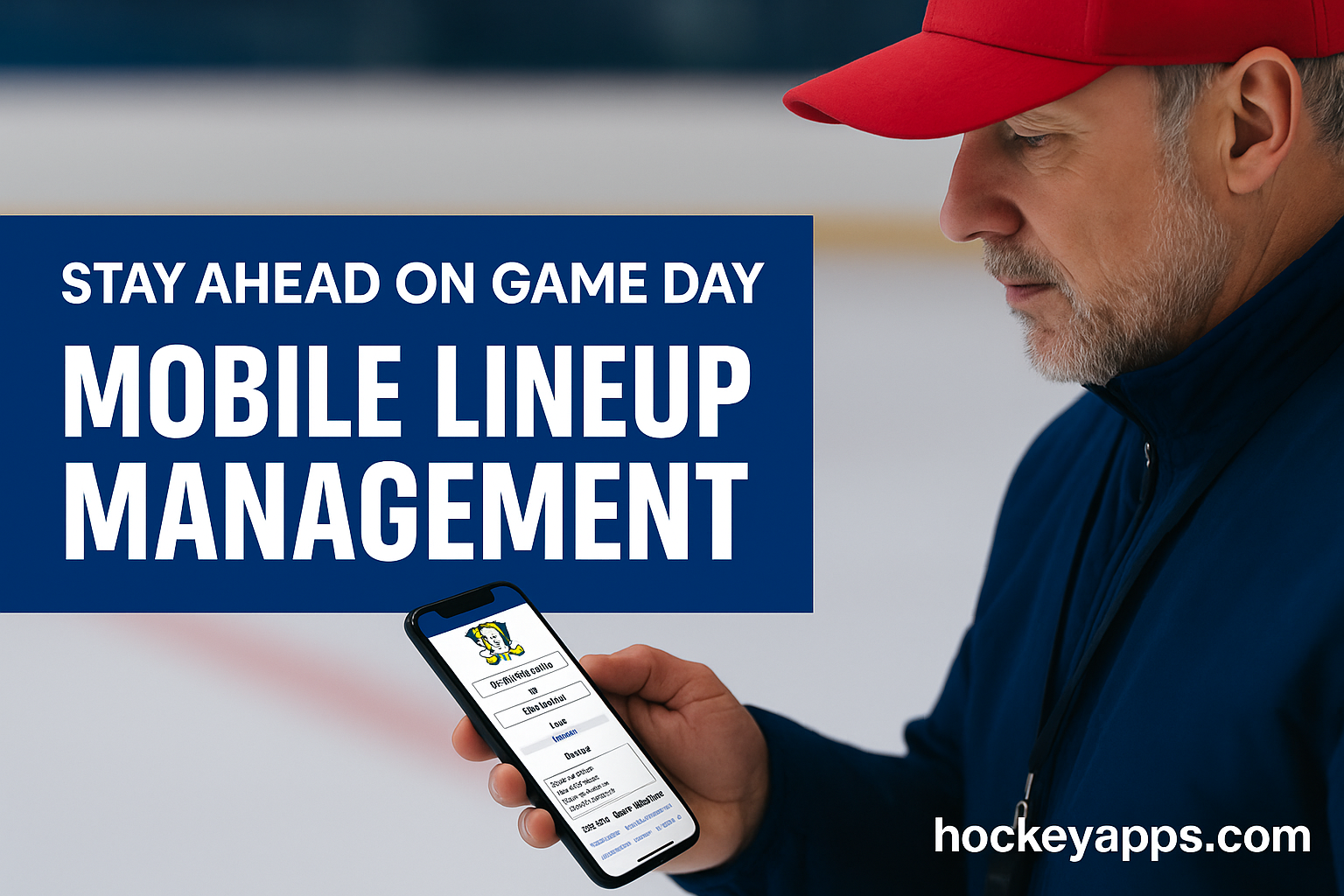
A Practical Guide for Coaches to Optimize Line Combinations and Ice Time
Every hockey coach has faced it: players missing a game and your “ideal” lineup goes out the window. Whether you’re playing with a short bench or have nearly a full squad, setting up your lines correctly is essential to keep the team organized, fresh, and competitive.
In this guide, we break down how to set up your lines depending on how many skaters (not including the goalie) you have available—from 7 to 15.
⚙️ General Guidelines
A standard hockey shift rotation is built around 3 forwards and 2 defensemen.
Skaters should get equal opportunity to play, especially at youth levels.
Keep shift lengths short (ideally 45 seconds to 1 minute).
Structure beats improvisation — clear lines help players focus on execution.
📊 Line Setup by Number of Skaters
7 Skaters
✅ 4 Forwards, 3 Defensemen
FWDs: 1 full line (3), 1 spare (rotates in)
DEFs: Rotate in a 3-man cycle
Tip: Keep communication tight. Assign shifts or use a whiteboard to keep rotation fair.
8 Skaters
✅ 5 Forwards, 3 Defensemen
FWDs: Two lines (3+2), rotate 5 players through 3 spots
DEFs: Same 3-man rotation
Strategy: Create a forward line of 3 and a “pair” with a floater that rotates between lines.
9 Skaters
✅ 6 Forwards, 3 Defensemen
FWDs: Two full lines
DEFs: 3-player rotation
Notes: This is one of the best “short bench” setups. Just make sure D gets enough rest.
10 Skaters
✅ 6 Forwards, 4 Defensemen
FWDs: Two consistent lines
DEFs: Two pairs, rotated evenly
Balance: Clean rotations with manageable minutes. Great flow potential.
11 Skaters
✅ Option 1: 7 Forwards, 4 Defense
✅ Option 2: 6 Forwards, 5 Defense
FWDs: Rotate 7 players across 2–3 lines (use a “swing” forward)
DEFs: Either 2 pairs and 1 rotating D, or 2.5 pairs
Flexibility: Choose based on strength and stamina of your D-core or forwards.
12 Skaters
✅ 8 Forwards, 4 Defensemen
FWDs: Three lines of 3 (with one floater rotating in)
DEFs: Two consistent pairs
Ice Time Tip: Consider rotating one forward per shift to keep the 8 skaters active.
13 Skaters
✅ 9 Forwards, 4 Defensemen
FWDs: Three full lines
DEFs: Two pairs
Usage: Ideal forward structure. Defense needs to log heavier minutes, but manageable.
14 Skaters
✅ 9 Forwards, 5 Defensemen
FWDs: Three lines
DEFs: Rotate 5 across three pairings
Advice: Stagger D rotation to spread energy — have two strong pairs and one relief D.
15 Skaters
✅ 9 Forwards, 6 Defensemen
FWDs: Three full lines
DEFs: Three full pairs
Result: The perfect game balance. Great depth and fresh legs all game.
🧠 Coaching Tips for Line Management
Use visual tools: Whiteboards, printed line cards, or apps like the Hockey Line Up Builder keep things organized.
Communicate line assignments: Make sure every player knows who they’re with.
Account for specialty roles: Have a plan for power play (PP) and penalty kill (PK) units.
Rotate evenly: Don’t overuse your strongest skaters at the expense of team growth.
Adjust as needed: If someone is tired or struggling, switch things up mid-game.
🧾 Bonus: Exporting Game-Ready Lineups
Want to make things even easier?
Try the free Hockey Line Up Builder App — just plug in your roster, assign positions, and it generates a clean PDF with:
Your team logo
Game date and opponent
Complete line assignments
Coaching staff listed at the bottom
No login required — data is stored locally so it’s private, fast, and mobile-friendly.
🚨 Final Word
From 7 skaters to 15, you can always build a smart, structured bench. With the right mix of planning, communication, and flexibility, your team can skate hard, stay fresh, and play smart — no matter how many show up on game day.
Stay organized. Coach with confidence. And enjoy the game! 🏒



